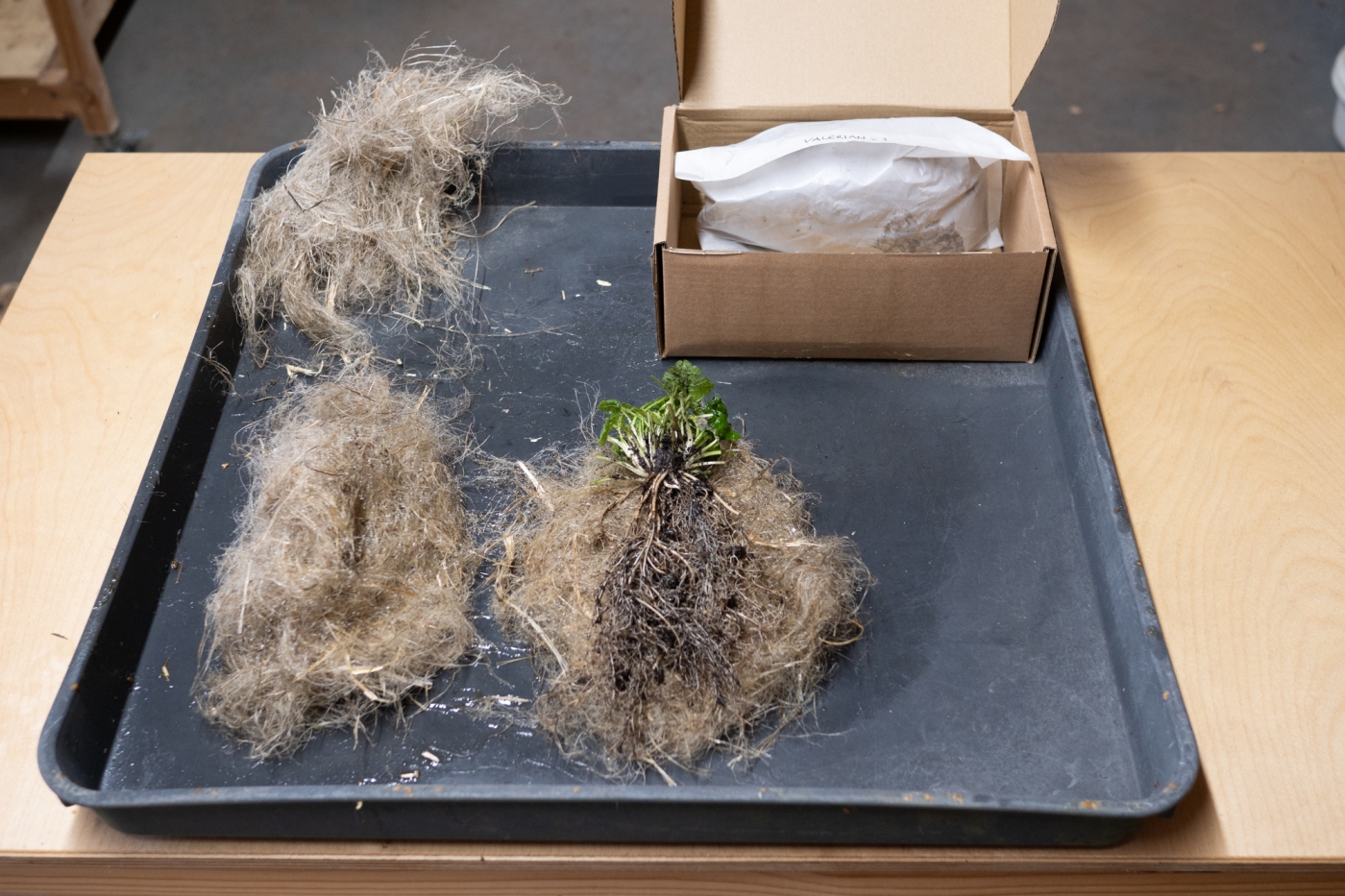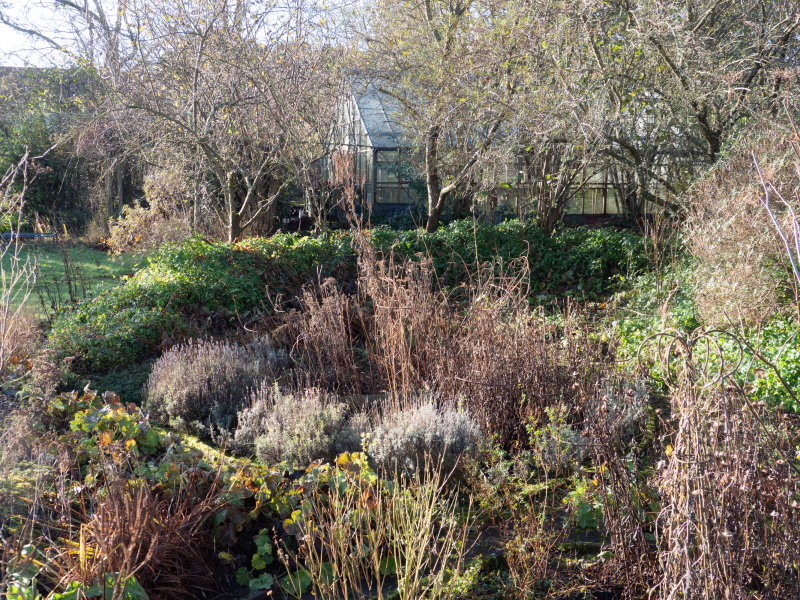Bare Root Plants – everything you need to know
What is a bare root plant?
A bare root plant is – as it says on the tin – a root that is ‘bare’ having been dug up from the soil. They are available between Autumn and Spring when the foliage has naturally died back and the plants are either dormant or just starting to grow their first leaves. They can be moved and planted at any time during their dormant period – except for when the ground is frozen – and will start growing again as soon as it warms up in the Spring.
What are the advantages of buying bare root plants?
Let’s be honest – planting a bare root plant is a lot easier than growing a plant from seed, especially of those that need stratification. It’s one of the quickest ways to get your herb garden established, making it ideal for beginners or for anyone short on time or space for germinating seeds.
One of the biggest benefits of bare root planting is that you still get to experience all the joy and anticipation of spring. As the weather warms, you’ll see those first shoots and fresh green leaves start to appear – one of the most exciting times in any gardener’s year.
By the time your plant has flowered, it’s often much bigger and more vigorous than it was when you first bought it. That means you’re effectively getting a larger, more mature plant for a fraction of the cost of a potted one. In other words, bare root plants are a brilliant way to save money while still enjoying impressive growth and long-lasting results.
Planting bare root herbs and perennials in autumn also builds a relationship with your garden through the quieter months. You get to nurture your plants as they settle in, ready to burst into life come spring. It’s a simple, satisfying way to connect with the rhythm of the seasons – and to enjoy beautiful, healthy plants without the wait.
Are your bare root plants organic?
Yes, all of our bare root plants are from our own nursery and certified organic by the Soil Association. They are grown with love and irrigated with water from a spring-fed pond.
When is the best time to plant bare roots?
The best time to plant perennial bare root plants is during their dormant season – typically from late autumn to early spring (November to March), when the soil is workable and not frozen or waterlogged.
- Autumn (November–December): An excellent time for planting. The soil is still warm, encouraging root growth before winter sets in.
- Winter (January–February): You can still plant if the ground isn’t frozen or waterlogged.
- Early Spring (March–April): Another great window before plants come out of dormancy, and especially useful if you missed autumn planting.
Important! Avoid planting in periods of heavy frost or when the soil is saturated as roots need air pockets in the soil to establish properly. We will put sales on hold if there is a period of freezing weather.
Why mulch? And what’s the best mulch for bare root plants?
At Earthsong Seeds, we provide free hemp fibre mulch with every bare root. Mulching helps bare roots stay hydrated, protected, and free from weed competition. As it breaks down, it feeds the soil and gives your plants the best start possible.
Compost or well-rotted organic matter – A great all-rounder that feeds the soil and encourages strong growth. Spread about 5 cm deep, keeping it away from the crown.
Straw or hay – Keeps soil cool and moist, ideal for fruit bushes and soft fruits, though it breaks down quickly.
Leaf mould – Soft, rich, and great for retaining moisture, perfect for woodland or shade-loving perennials.
Bark chips or wood mulch – Long-lasting and good for weed control, best around trees and shrubs.
Hemp fibre or coir mulch – Eco-friendly, tidy, and holds moisture well. Apply lightly (2–5 cm) to allow airflow.
What age and size are the bare roots that you sell?
We send roots of plants that have been growing for at least one season so – in most cases – the plants will flower in their first year of growing in your garden. Roots come in all shapes and sizes, and sometimes they include both new and old growth of unverifiable age. If it is a large root, we may divide it or take a cutting and count one ‘bare root plant’ as a cutting with a healthy bud or ‘eye’ that will grow into a single plant.
How do you send bare root plants?
We send our bare root plants wrapped in moistened hemp fibre wrapped in biodegradable glassine paper. The moist hemp fibre prevents the roots from drying out and the glassine paper helps keeps the moisture in, preventing your box from turning into a soggy mess. The hemp fibre can be composted or used as a mulch to help protect your new plants from frost.

How long will it take to receive my bare root plants?
During the winter months, we pack bare-root orders on Tuesdays and Thursdays and send them via Royal Mail’s 24-hour Tracked service. Please note that selecting this option does not mean your plants will arrive within 24 hours of placing your order. The 24-hour Tracked service applies from the day of dispatch, not the day of ordering. In most cases, your order will arrive the following day, but Royal Mail does not guarantee next-day delivery — it may take a few days depending on your location.
Do you send seeds and bare roots together in the same parcel?
If your order contains bare roots and seed packs we will send them together with the seeds in a reusable ziplock bag to prevent them from getting damp alongside the moistened bare root plants. This is the only time we use plastic in our packing.
Please note that we only pack bare roots three days a week, so if you need your seeds urgently (i.e. the next day) the best solution is to place two orders – one for the seed packs and one for the bare roots.
What should I do when the bare roots arrive?
When your plants arrive you can either plant them straight into the ground (ideally in pre-prepared ground with compost), or you can plant them into pots and let them get established in a sheltered spot, or in a greenhouse, before planting out later in the Spring. If the roots feel dry on arrival soak them in a bucket of water for a few hours before planting.
How long can the bare roots be kept before planting?
We recommend planting them as soon as possible, but if you don’t have time to plant them immediately, don’t worry. Keep them outside and make sure they don’t dry out – you could even water the entire box of bare roots in their original packing to buy you some extra time if needed. Larger fleshy rhizomes will survive for longer than thin roots, so the survival time will vary from species to species.


